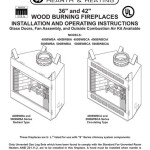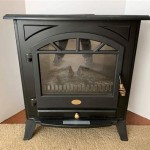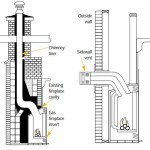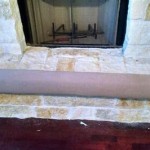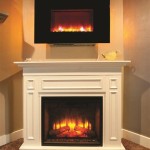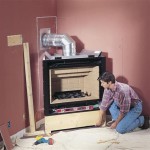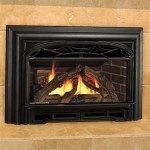Cost to Convert a Wood-Burning Fireplace to a Gas Insert
Converting a wood-burning fireplace to a gas insert is a significant home improvement project that can enhance convenience, efficiency, and aesthetics. Understanding the associated costs is crucial for budgeting and making an informed decision. The overall cost is influenced by various factors, including the type of gas insert, the complexity of the installation, existing fireplace conditions, and regional labor rates. This article will provide a detailed breakdown of the cost considerations, offering a comprehensive guide to help homeowners navigate this conversion process.
Several reasons motivate homeowners to transition from wood-burning fireplaces to gas inserts. Wood-burning fireplaces require manual fuel loading, create ash and soot, and can be more challenging to regulate in terms of heat output. Gas inserts offer greater convenience with push-button ignition and thermostatic control, providing consistent and controllable heat. Furthermore, modern gas inserts are often more energy-efficient than traditional wood-burning fireplaces, potentially reducing heating costs. The decision to convert is a balance between the ambiance of a wood fire and the practicality of gas.
Key Cost Factors: The Insert Itself
The primary cost component is the gas insert itself. Gas inserts are available in a wide range of styles, sizes, and heat outputs, each with varying price points. These inserts are typically categorized by their BTU (British Thermal Unit) rating, which indicates the amount of heat they can produce per hour. A higher BTU rating generally translates to a higher purchase price. Additionally, the aesthetic features, such as the log set design, burner technology, and surround options, significantly impact the overall cost.
Entry-level gas inserts, suitable for smaller rooms or supplemental heating, typically range from $1,500 to $3,000 for the unit alone. These models often feature basic controls and simpler log set designs. Mid-range inserts, offering more advanced features like variable flame height, remote control operation, and more realistic log sets, typically cost between $3,000 and $5,000. High-end gas inserts, boasting the most realistic flame appearance, advanced control systems, and the highest BTU outputs, can range from $5,000 to $8,000 or even higher. Ventless gas inserts, which do not require a chimney or vent, are often priced competitively, but their use is limited by code in many areas. Homeowners should carefully evaluate their heating needs and aesthetic preferences when selecting an insert to balance cost and functionality.
The type of gas the insert uses also impacts the price. Natural gas inserts are often more common and may have a slightly lower initial cost, but require access to a natural gas line. Propane inserts are useful in areas without natural gas, but propane tanks and refill costs need to be factored into the overall budget. The cost of connecting to a natural gas line, if one is not already present, can add a significant expense to the project.
Key Cost Factors: Installation and Labor
Installation costs constitute another significant portion of the overall expenditure. This includes the labor involved in preparing the fireplace opening, running gas lines, installing the insert, and ensuring proper venting. The complexity of the installation varies depending on several factors, including the existing fireplace condition, accessibility to gas lines, and local building codes.
Professional installation is strongly recommended to ensure safety and compliance with local regulations. Licensed gas fireplace installers typically charge between $500 and $2,000 for the complete installation. This cost can fluctuate based on the complexity of the project. For instance, if a new gas line needs to be run from the meter to the fireplace, the cost will increase due to the additional labor and materials required. Similarly, if the existing chimney needs to be relined or repaired, this will add to the overall expense.
Chimney inspection is a crucial step before installing a gas insert. A qualified chimney sweep should inspect the existing chimney for any structural damage, blockages, or creosote buildup. If the chimney is deemed unsafe or unsuitable for gas insert use, repairs or relining may be necessary. Chimney relining, which involves installing a new liner inside the existing chimney, can cost between $1,000 and $3,000, depending on the height of the chimney and the type of liner used. Neglecting chimney inspection can lead to carbon monoxide poisoning or fire hazards, emphasizing the importance of professional assessment.
Permit fees are another installation-related cost to consider. Most jurisdictions require permits for gas fireplace installations to ensure compliance with safety and building codes. Permit fees typically range from $50 to $200, depending on the location and the scope of the project. Failure to obtain the necessary permits can result in fines and delays, underscoring the importance of adhering to local regulations.
Key Cost Factors: Preparatory Work and Additional Expenses
Before installing the gas insert, some preparatory work may be necessary to ensure the fireplace opening is suitable. This can include cleaning the firebox, removing any existing grates or accessories, and potentially modifying the size of the opening to accommodate the insert. These tasks can add to the overall project cost, particularly if professional assistance is required.
Depending on the design and desired aesthetics, some homeowners choose to install a decorative surround around the gas insert. Surrounds are available in various materials, such as stone, brick, tile, and wood, Each of these materials has different pricing. These surrounds create a finished look and can enhance the overall appearance of the fireplace. The cost of a surround can range from $200 to $1,000 or more, depending on the material and design complexity. Installation of the surround may also incur additional labor costs.
Another factor to consider is the cost of gas line installation, if one is not already present. Running a new gas line involves trenching, pipe fitting, and connecting to the main gas supply. This can be a complex and potentially dangerous task that should only be performed by a qualified professional. The cost of gas line installation can vary significantly, depending on the distance from the gas meter to the fireplace, the type of terrain, and local labor rates. A typical gas line installation can range from $500 to $2,000 or more.
In some cases, electrical work may be required to power the gas insert's control panel or blower. This can involve running a new electrical outlet to the fireplace area. The cost of electrical work typically ranges from $100 to $500, depending on the complexity of the wiring and local electrician rates.
Finally, consider ongoing operational costs after the conversion. While gas inserts are generally more efficient than wood-burning fireplaces, they still consume gas. The cost of gas will vary depending on local gas prices and usage patterns. Regular maintenance, such as cleaning the burner and inspecting the venting system, is also recommended to ensure optimal performance and safety. These maintenance costs are generally minimal but should be factored into the overall cost of ownership.
In summary, converting a wood-burning fireplace to a gas insert involves a multifaceted cost structure. The price of the insert, installation labor, preparatory work, and ongoing operational costs all contribute to the total expenditure. Careful planning and budgeting are essential for a successful conversion project. Obtaining multiple quotes from reputable installers and thoroughly assessing existing fireplace conditions can help homeowners make informed decisions and avoid unexpected expenses.
Ultimately, a gas insert offers a convenient and efficient heating solution, transforming a traditional fireplace into a modern amenity. Understanding the associated costs empowers homeowners to navigate the conversion process with confidence and achieve a desirable outcome.
Converting A Wood Burning Fireplace Into Gas Heat Glo

What S The Cost To Convert A Wood Fireplace Gas Orange County Register

Wood To Gas Fireplace Conversion In Wisconsin Free Quote Badgerland Waesha

Convert From Wood To Gas With A Insert The Kernel Burner
Can I Convert My Wood Burning Fireplace To Gas Woodlanddirect Com
Can I Convert My Wood Burning Fireplace To Gas Woodlanddirect Com

Convert To Gas Installing Fireplace Inserts Doctor Flue

Wood Fireplaces Gas Conversion That Counts

Want To Convert Gas Wood Fireplace Full Service Chimney

Can A Wood Burning Fireplace Be Converted To Gas The Flame Company
Related Posts

